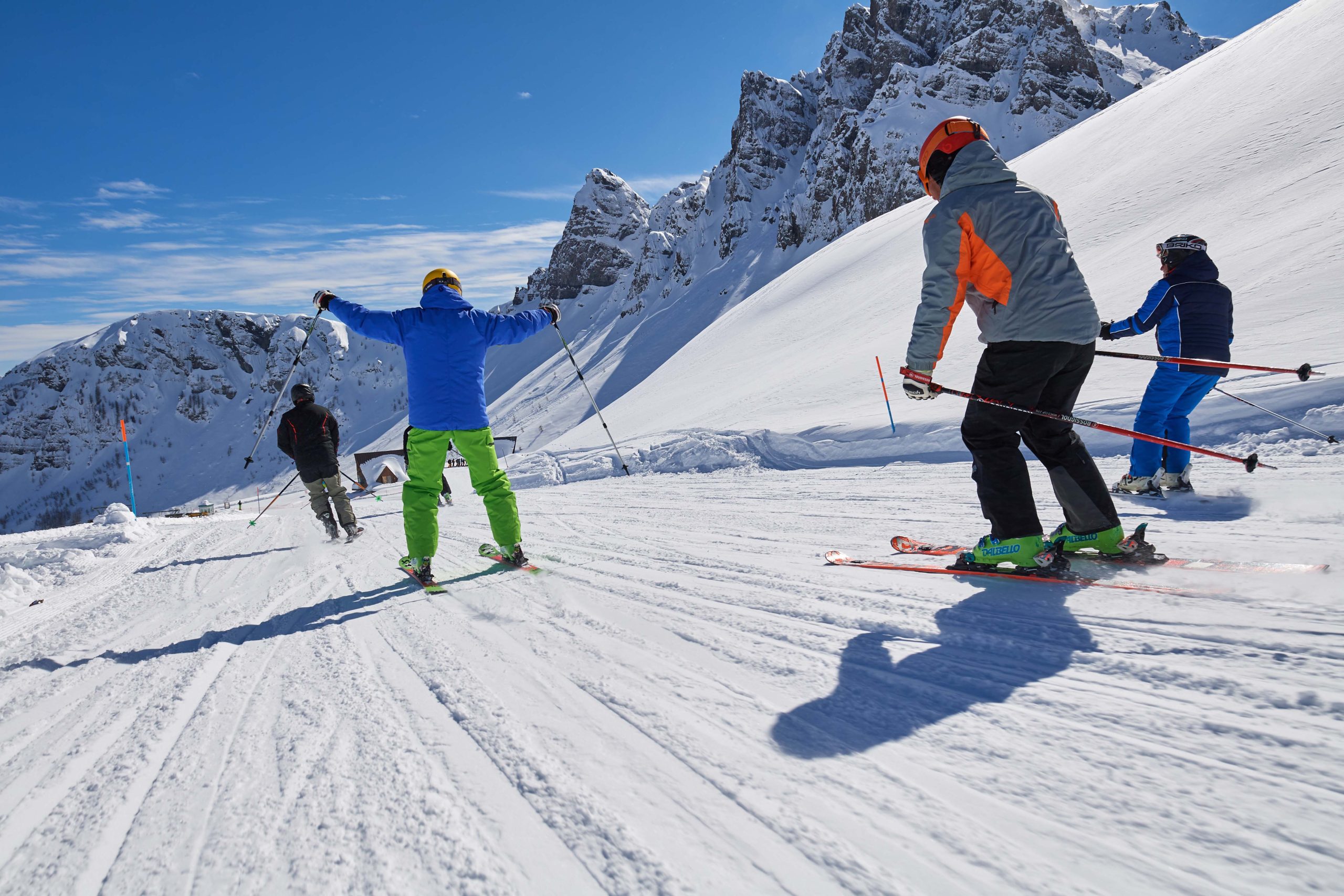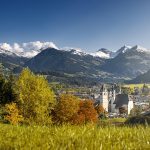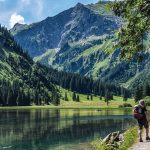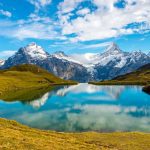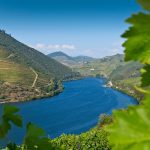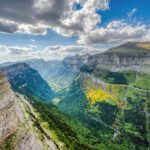For starters, you are skiing in the Alps’ most beautiful mountain range. Then there is Dolomiti Superski one of the largest ski networks in the world, and simultaneously one of the world’s most hi-tech and cutting-edge, too. Holidaymakers are endlessly impressed by outstanding piste presentation, quality queue-free lift infrastructure, interactive technology, and snowmaking facilities capable of producing fabulous conditions across this substantial network.
In addition, Dolomites ski resorts remain characterful and pretty. The vibrant and stylish villages and towns accommodate guests in an impressive range of accommodation types, from wow-factor 5* hotels like Hotel La Perla, to traditional B&Bs like Garni Tofana – and everything in between. High-rise buildings and vast complexes do not belong here; instead, your breath is taken away by the beauty and innovation of building techniques that harmonise with the immense traditional charm of the South Tyrol. This short article is an uncomplicated overview of the skiing areas that radiate, by and large, from the monumental Monte Sella at the heart of the central Dolomites… in simple terms, what lies between Cortina (to the east) and the Val Gardena (in the central west).
Are the Dolomites good for skiing?

Unsurprisingly, the Dolomites is a highly sought-after ski destination, and, yes, it is an outstanding skiing holiday option for multiple reasons. To quickly name a few: with explosive rock formations and picture-postcard resorts, the scenery is breathtaking; piste preparation, snow-making and lift infrastructure is likely to be a cut above anything you have experienced elsewhere.
Food and drink options on the mountain are unrivalled, ranging from excellent and affordable, to high-end and/or Michelin Star. Finally, the ski network is vast, with 1200kms of piste and 450 lifts. Indeed, such is the geography of the Dolomites, skiing is not confined to one or two valleys; instead you can tour multiple valleys, each one an accomplished ski holiday resort in its own right. Get ready to clock up the kilometres, with every metre and lift recorded on your interactive app, which is highly useful when you mislay a member of your party!


What is the Sellaronda?

At the heart of Dolomiti Superski is its ‘piece de resistance,’ the Sellaronda. At 3152m, Monte Sella might be one of the highest peaks in the Dolomites, but its altitude says nothing about its sheer size. This is a truly colossal massif. The Sella, as it is widely known, is a cathedral-like natural plinth that dominates the central region of Dolomiti Superski. It is the terminus for 4 glorious valleys, all renowned for their scenery and skiing. The Val Gardena, the Alta Badia, Arabba Livinallongo and the Val di Fassa all wend their way from the Sella, flanked by picturesque winter ski resorts, abundant in charm and character. Towered over by the dramatic walls of the Sella, four exceptional ski resorts nestle at the end of each valley, each one offering fabulous accommodation and experiences for a skiing holiday in the Dolomites: Arabba, Canazei, Corvara and Selva Gardena.
Inevitably, each valley is a full-blown ski destination in its own right, featuring a tantalising array of pistes and itineraries for skiers of all abilities. However, way back in the 1970’s, it was too irresistible not to link these destinations, so that skiers could venture far and wide on the same skipass. The result, of course, is the Sellaronda, a circuit which skiers can negotiate clockwise or anti-clockwise, each version offering just under 30kms of superbly-maintained piste and mountain scenery that will blow the mind. Brilliantly waymarked with green signs for clockwise skiers and orange ones for anti-clockwise, it is supported by one of the most modern lift infrastructures in the world. Skiers go from village-to-village, valley-to-valley, barely having to queue at all. Furthermore, it is easy for ambitious skiers to take diversions at any point to explore their magnificent surroundings.
To that extent, regular skiers to the Dolomites either see the Sellaronda as a stand-alone itinerary, or they simply use it (as you would, say, the M25) as a means of accessing valleys and off-shoots that take you deep into Dolomiti Superski, often up to 15-20kms from your base, providing an exhilarating sense of adventure.


As for grading, the Sellaronda can be described as intermediate, whilst it is easy for advanced skiers to veer off in search of steeper challenges, notably around Arabba and Selva Gardena. Non-stop, an intermediate skier doing it for the first time should complete the circuit in about 5 hours, so it’s best to set off quite early in the morning, especially if you are planning a good lunch along the way. The route includes four passes – Gardena 2136m, Campolongo 1875m, Pordoi 2239m, Sella 2218m – and you don’t want to be on the wrong side of one of these by getting behind the clock, as then it’s a taxi back to your resort. You can read more about skiing the Dolomites as a beginner in our 4 part series.
Yet, ski holidays in the Dolomites are not all about the Sellaronda. In the Val Gardena the World Cup Downhill run at Santa Cristina is a must for advanced skiers, as is Alta Badia’s Gran Risa, which hosts the World Cup Giant Slalom. From the top station of the iconic Lagazuoi cable car, you can ski the Hidden Valley amidst mindboggling rock formations before being towed back to the lift network by horses. Down the road from Lagazuoi lies the Pearl of the Dolomites, Cortina d’Ampezzo. Here, you are some distance from the Sellaronda, yet the quality and extent of the skiing and jaw-dropping scenery is worth it. And what about the Marmolada, Queen of the Dolomites, the highest peak at 3303m? Here, a dramatic 3 stage cable car whisks you to the top of a sublime12km descent.
What are the best months to ski in the Dolomites?

Most skiers have their favourite week or month in which to take their skiing holiday, whilst others are restricted to school or university holiday periods. The formal start of skiing in the Dolomites is the first weekend of December, coinciding with the feast of San Ambrogio.
At Collett’s, we start in mid-December with a popular pre-Christmas holiday we call Earlybird Week, an opportunity to ski relatively deserted pistes before coming home for Christmas. Inevitably, the area gets busier at Christmas and, in particular, at New Year, before making way for low-season January, which, whilst colder generally, is a fabulous time to exploit more competitive accommodation prices and largely deserted, snow-sure pistes in fabulous condition.
On this basis, it is hard not to argue that January is the best month for skiing in the Dolomites. This less-frequented period lasts until early/mid-February when UK half-terms and a 14-day Italian Carnival period combine to create high demand until the first weekend in March. Thereafter, the season slowly fades, often gloriously, reaching its culmination typically as soon as Easter is behind us, although that can depend on whether Easter is early or late. Either way, the resorts of Arabba and Cortina always remain open after other valleys have closed, often providing sublime skiing conditions well into mid/late-April.
Personally, I am huge fan of skiing in the Dolomites during spring. Over 30 years, the gamble has nearly always paid off, even if warm temperatures in the afternoons make for heavy snow, which inevitably presents risks. The trick is to ski hard until a late lunch on a sunny terrace above the resort, whiling away the afternoon to the accompaniment of live Tyrolean music and a few well-earned beers.


What are the best ski resorts in the Dolomites?

Whilst there are no bad ski resorts in the Dolomites, some boast better strategic locations than others, whether that is based on altitude or geographical location. Arabba is a premier ski resort in the Dolomites because of:
- Its altitude – at 1602m, it is the highest resort on the Sellaronda
- Its labyrinth of steep, north-facing slopes
- Its status as gateway to the Marmolada and key location on the Sellaronda.
I still rank it very highly and crave time at the Sporthotel Arabba, one of my favourite launchpads for Dolomiti Superski.
Nevertheless, its stylish neighbour, Corvara, in the Alta Badia gives it a good run for its money. Along with Arabba, Corvara (1500m) is where Collett’s bases itself in winter. It is another key station on the Sellaronda, a heady combination of chic elegance, awe-inspiring surroundings and fabulous skiing for all grades. Here, Collett’s provides both self-catering and half-board accommodation for independent skiers.
Where lesser-known and (usually) smaller resorts are concerned, the Dolomites is home to several exquisite and picturesque gems, where highly attractive buildings huddle around onion-domed churches, often hiding the fact that they are part of a first-class place for a winter holiday. I refer to villages like San Cassiano and Colfosco in the Alta Badia, Santa Cristina and St. Ulrich in the Val Gardena; and Moena in the Val di Fassa.
